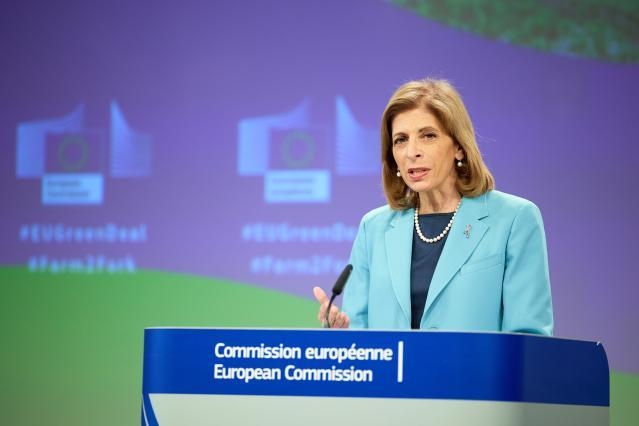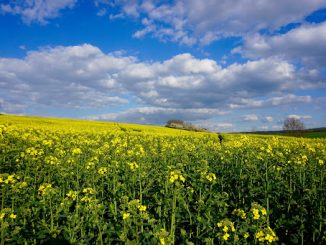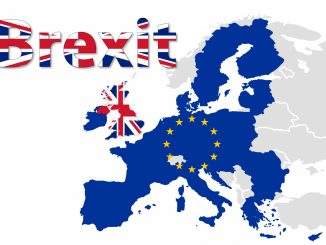
After months of delays, the European Commission has adopted the Regulation on the Sustainable Use of Plant Protection Products. The regulation proposes legally binding targets and annual reporting by Member States to reach a 50% reduction in pesticide use by 2030. There are however, some serious issues yet to be resolved. Unpacked by Ashley Parsons.
On June 22, the European Commission unveiled its new Regulation on the Sustainable Use of Plant Protection Products (SUR). Dubbed the Nature Protection Package day, Wednesday also saw the Nature Restoration Law to combat degradation of nature and biodiversity loss in the EU introduced.
The SUR will require all Member States to set legally binding pesticide reduction targets and report annual progress.
Reaching an EU-wide pesticide reduction of 50% is one of the main targets of the Green New Deal. Essential in reversing the biodiversity crisis, pesticide reduction also has health benefits for farmers, workers and people generally.
The Commissioner for Health and Food Safety Stella Kyriakides, said during the presentation of the new regulation that “we need to reduce the use of chemical pesticides to protect our soil, air and food, and ultimately the health of our citizens. This is not about banning pesticides. This is about making them a last resort measure.”
Presenting both the Nature Restoration Law and the regulation was Frans Timmerman: “When we restore nature, we allow it to continue providing clean air, water, and food, and we enable it to shield us from the worst of the climate crisis. Reducing pesticide use likewise helps nature recover, and protects the humans who work with these chemicals.”
By changing the directive to a regulation, pesticide reduction becomes a legally-binding endeavor. Member States will set their own pesticide reduction targets, and if they set targets below 50%, they will have to justify why. However there is still a process ahead, and some caveats to navigate.
What’s Inside
- Legally binding targets at EU level to reduce by 50% the use and the risk of chemical pesticides as well as the use of the more hazardous pesticides by 2030. Member States will set their own national reduction targets within defined parameters to ensure that the EU wide targets are achieved.
- Environmentally friendly pest control: New measures will ensure that all farmers and other professional pesticide users practice Integrated Pest Management (IPM). This is an environmentally friendly system of pest control which focuses on pest prevention and prioritises alternative pest control methods, with chemical pesticides only used as a last resort.
- A ban on all pesticides in sensitive areas: The use of all pesticides is prohibited in places such as urban green areas, including public parks or gardens, playgrounds, recreation or sports grounds, public paths as well as protected areas in accordance with Natura 2000 and any ecologically sensitive area to be preserved for threatened pollinators.
Other details to note are that the regulation requires mandatory record keeping by farmers, as well as crop-specific rules identifying the alternatives to be used instead of chemical pesticides. Member States will submit annual reports on progress and implementation. The targets must be met by 2030, giving farmers and Member States time to adapt their practices. To help farmers, Member States must use at least 25% of their CAP direct income support budget for eco-schemes, 35% of their rural development budget for actions that benefit the climate and environment, including the reduction of farmers’ dependency on chemical pesticides.
Reaction
Campaigning NGOs have welcomed the move, which was opposed by twelve member states, led by Estonia and Poland (see text here ST_10009_2022_INIT_x and here ST_7269_2022_INIT_x)
“Even though the proposal needs strong improvements, PAN Europe welcomes its publication so that democratic discussions can finally start” PAN Europe said in a statement.
However, there is still work to be done. One pressing issue is the indicator mechanism that measures progress. The results the indicator produces, misleadingly overestimates the risks of substances authorised in organic farming, and underestimates other, more dangerous synthetic products used in conventional agriculture. IFOAM EU covers this in more detail on Twitter, and in its indicator proposal, while PAN-Europe covers it here.
PAN-Europe point out that the European Court of Auditors has been calling for change in indicators since 2020. “The auditors explained that the supposed reduction indicated by the HRI-1 (Harmonised Risk Indicator 1) is mainly due to a decrease in sales of substances that are no longer approved, and not to an actual reduction in pesticide use.”
PAN-Europe also point evidence presented in a briefing by GLOBAL 2000 on HRI-1 Quoting Helmut Burtscher-Schaden:
“A major misconception of the HRI-1 is that it establishes causality between the amount of pesticide used and the resulting risk, while largely ignoring existing differences in toxicity and treated area. Yet these differences amount to a factor between 10 and 1,000 when comparing synthetic active substances with naturally occurring active substances. Despite this, the HRI-1 attributes exactly the same risk to a kilogram of quartz sand – just sufficient to protect five trees from browsing by game – as to a kilogram of a pyrethroid insecticide – enough to kill every living insect over 200 hectares. To largely ignore these differences, as the HRI-1 does, inevitably leads to grotesquely wrong results.”
The regulation must pass the Council and the European Parliament before it can take effect, so there is time to fix these issues will be during the co-decision making process.
More
Nature Restoration Law: A Chance for the EU to Make Good on the Green Deal
A Leaked Pesticide Regulation and a Political Merry Go Round
Ministers Move to Make Pesticide Reduction Targets Meaningless, New Reports Reveal






1 Trackback / Pingback
Comments are closed.